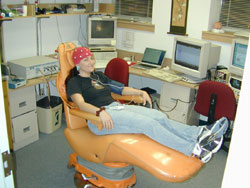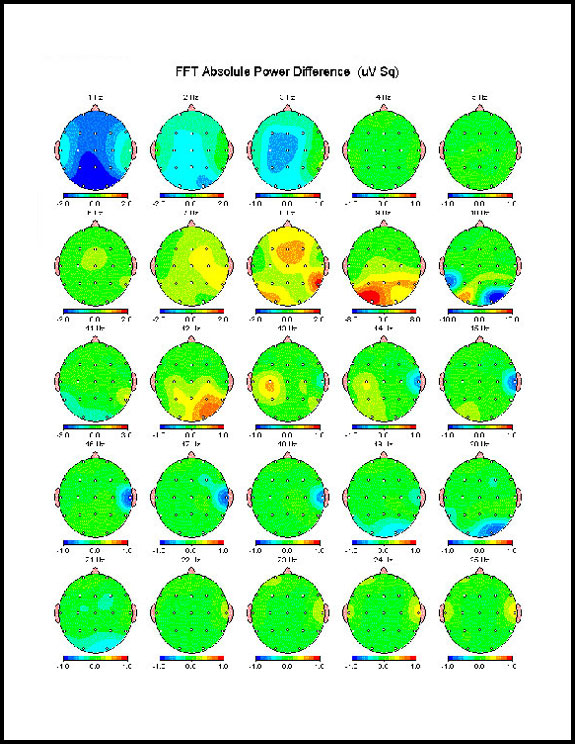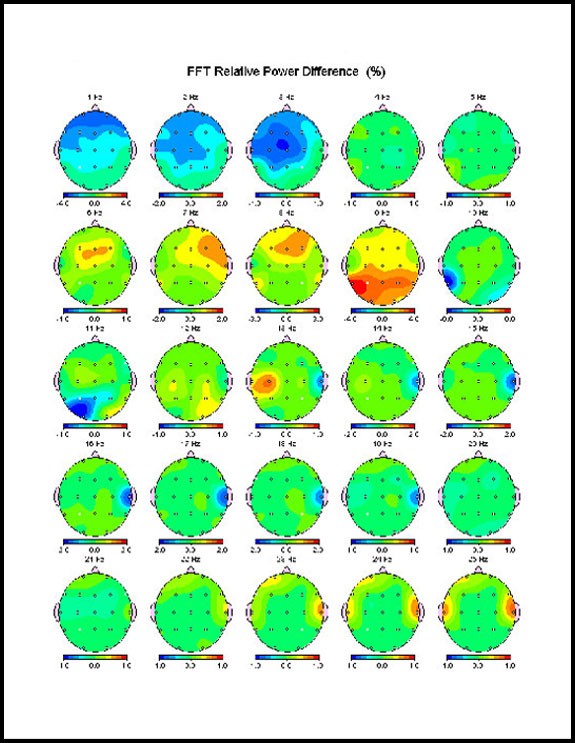Kennerly, Richard. QEEG Analysis of Cranial Electrotherapy: A Pilot Study. Presented at the International Society for Neuronal Regulation annual conference, September 18-21, 2003 in Houston, Texas.
Key words: cranial electrotherapy stimulation, CES, QEEG, depression, anxiety, pain, sleep disorders.
Introduction
Cranial electrotherapy stimulation (CES) is the use of low
level electrical current applied to the head for therapeutic purposes. Cranial electrotherapy stimulation is also known as electrosleep, cranial electrotherapy (CET), cranial stimulation (CS), transcranial electrotherapy
(TCET), neuroelectric therapy (NET), cranial TENS and auricular electrical stimulation. The FDA authorizes the production and sale of medical devices for cranial electrotherapy in the United States for the treatment of pain,
depression, anxiety, and sleep disorders. To date 112 of 126 published studies in the US on CES have had positive outcomes, involving 4,541subjects (in all 126 studies) without significant side effects from the treatment
(Kirsch, 2002). The current study was conducted to determine the effect of cranial electrotherapy on cortical activity as measured by QEEG before and after a single 20-minute use of CES. This pilot study is being followed up by
a double blind placebo controlled study of cortical activation changes from baseline with three and six weeks of CES treatment.
Method
|
packages. Digital EEG, blood pressure, heart rate, electrodermal activity and finger temperature was acquired during a baseline condition, during cranial electrotherapy, immediately after electrotherapy, and after three weeks of daily use of cranial electrotherapy.
Results
During CES at 0.5 Hz significant increases were seen across the entire cortex in delta and gamma frequencies, this effect was uniform for all volunteers. After a single 20-minute session of CES decreases were seen in delta and theta frequency activity with concomitant significant increase in alpha activity. The study volunteers generally reported feeling more relaxed after 20-minutes of CES. Some volunteers reported feeling as if their head had cleared and they felt more awake. Research volunteers who reported pain or anxiety before the single session of CES treatment reported significant reductions in pain and anxiety after the 20-minute treatment.
Conclusions
This pilot study indicates that CES at 0.5 Hz entrains delta and gamma frequencies during active stimulation. After a single
20-minute treatment with CES there is a significant increase in alpha frequency activity and a significant decrease in delta and theta activity. The post treatment maps indicate the effect of single session cranial electrotherapy treatment on QEEG is congruent with the reports of the research volunteers of decreased anxiety, increased alertness and increased relaxation.
References
Kirsch, D. L. (2002). The Science Behind Cranial Electrotherapy Stimulation. Edmonton, Alberta: Medical Scope Publishing Corporation.
|
|


